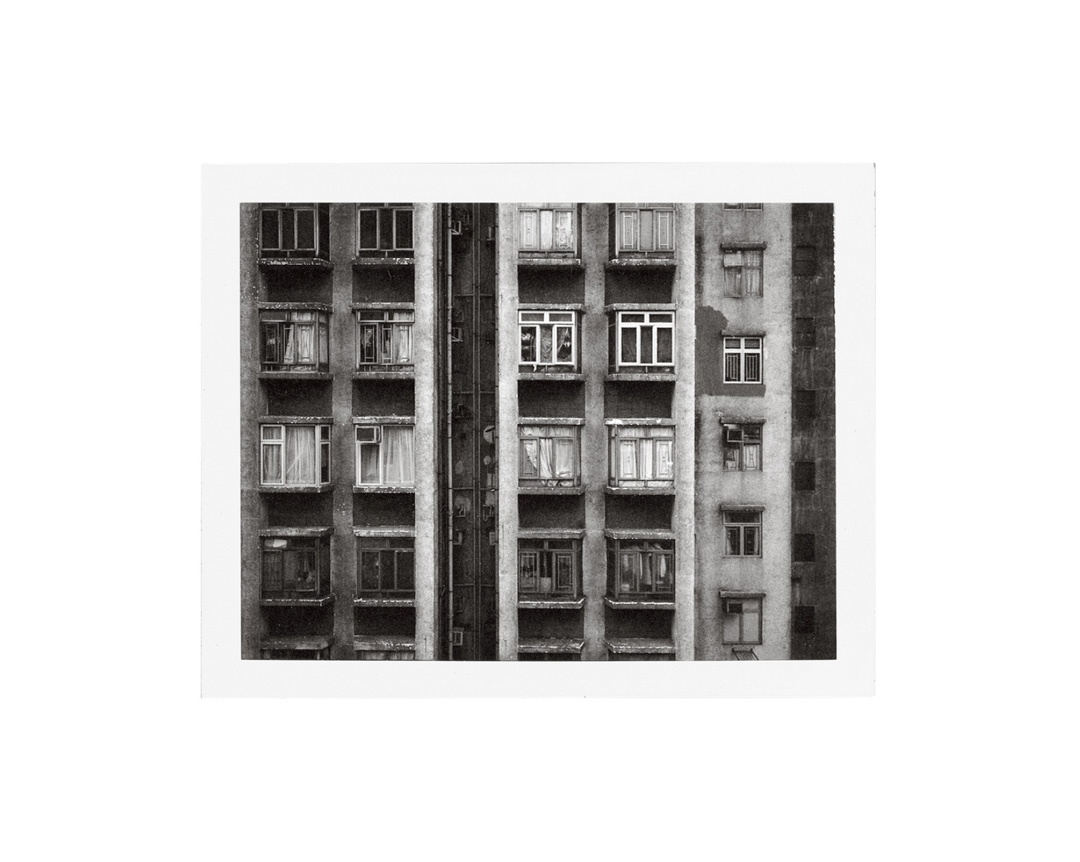
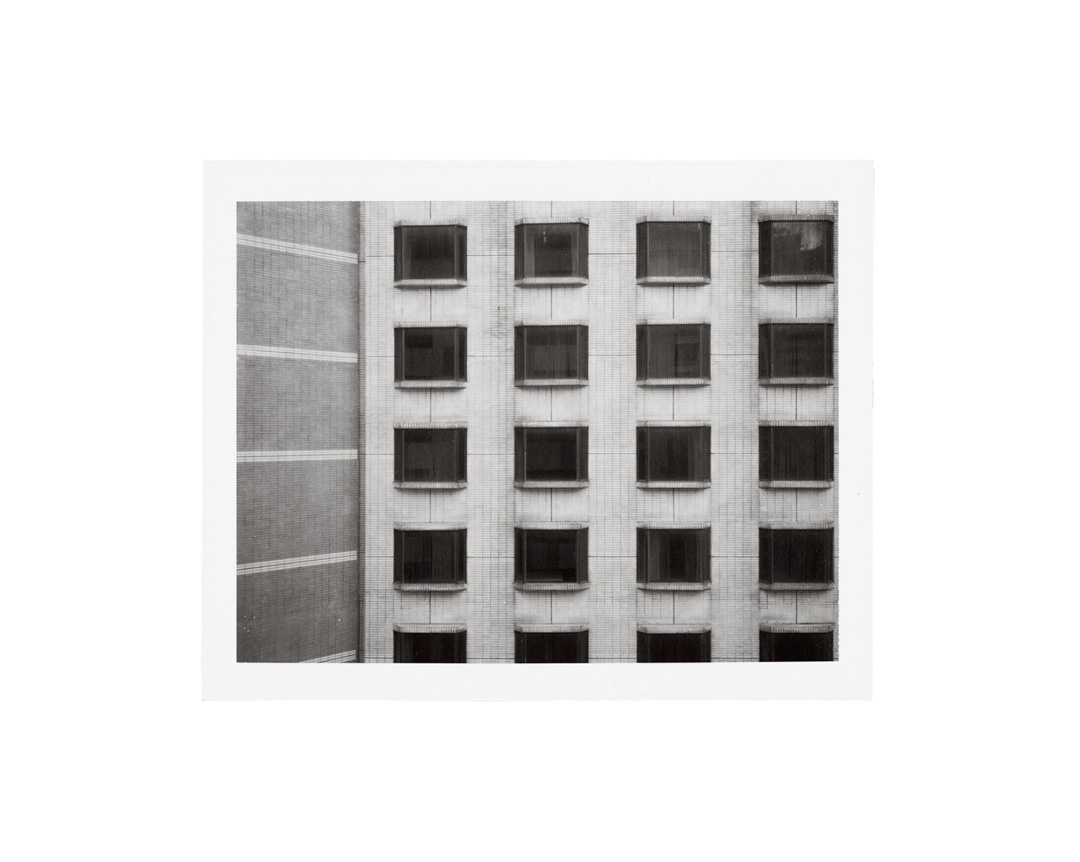
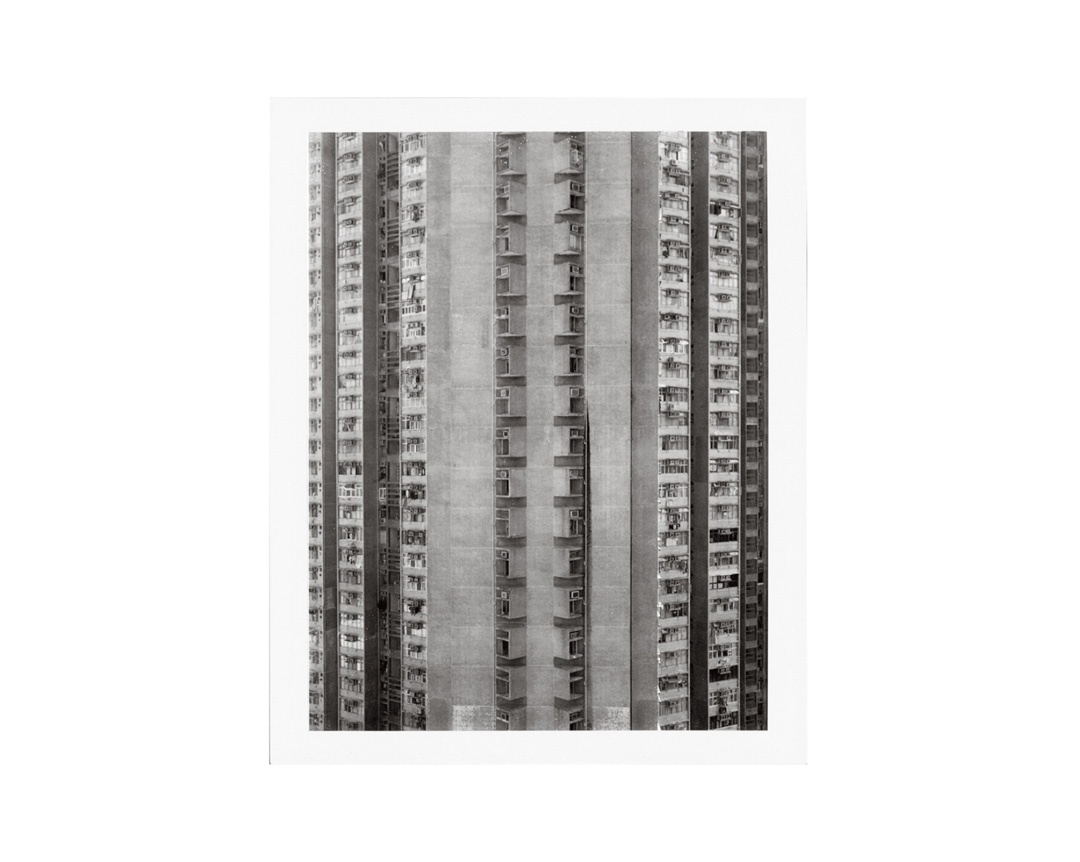
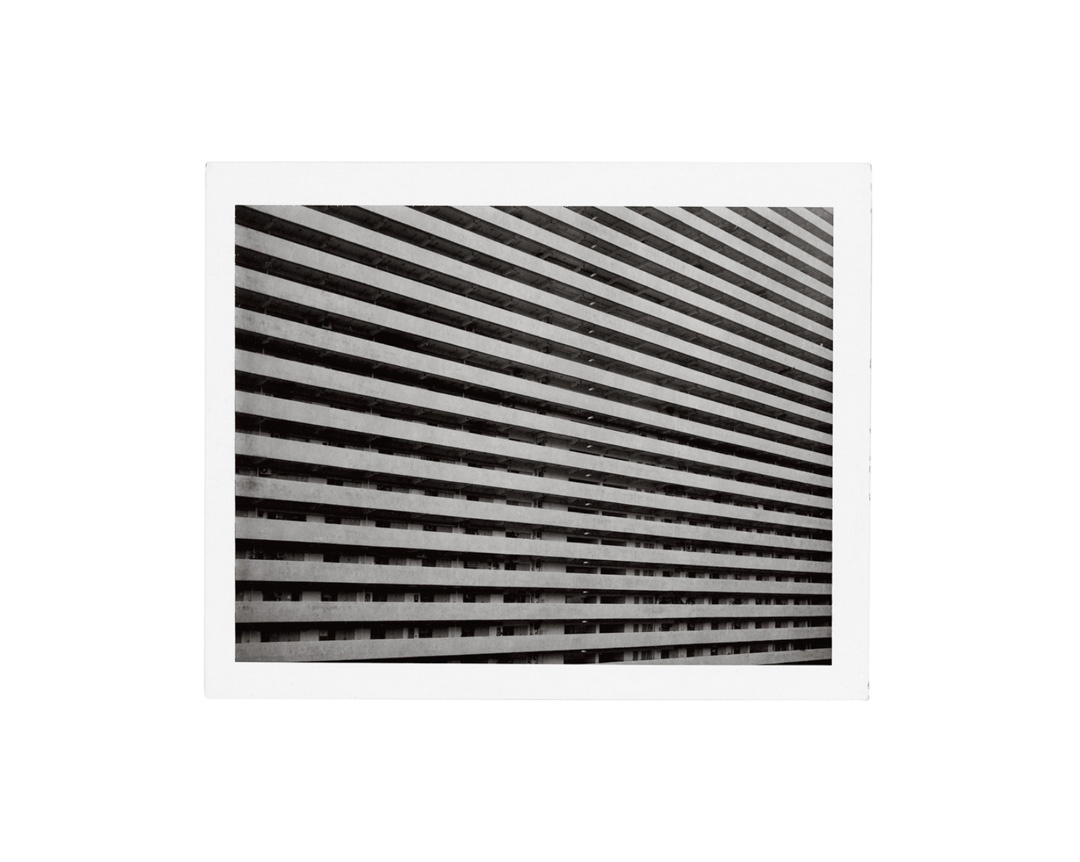
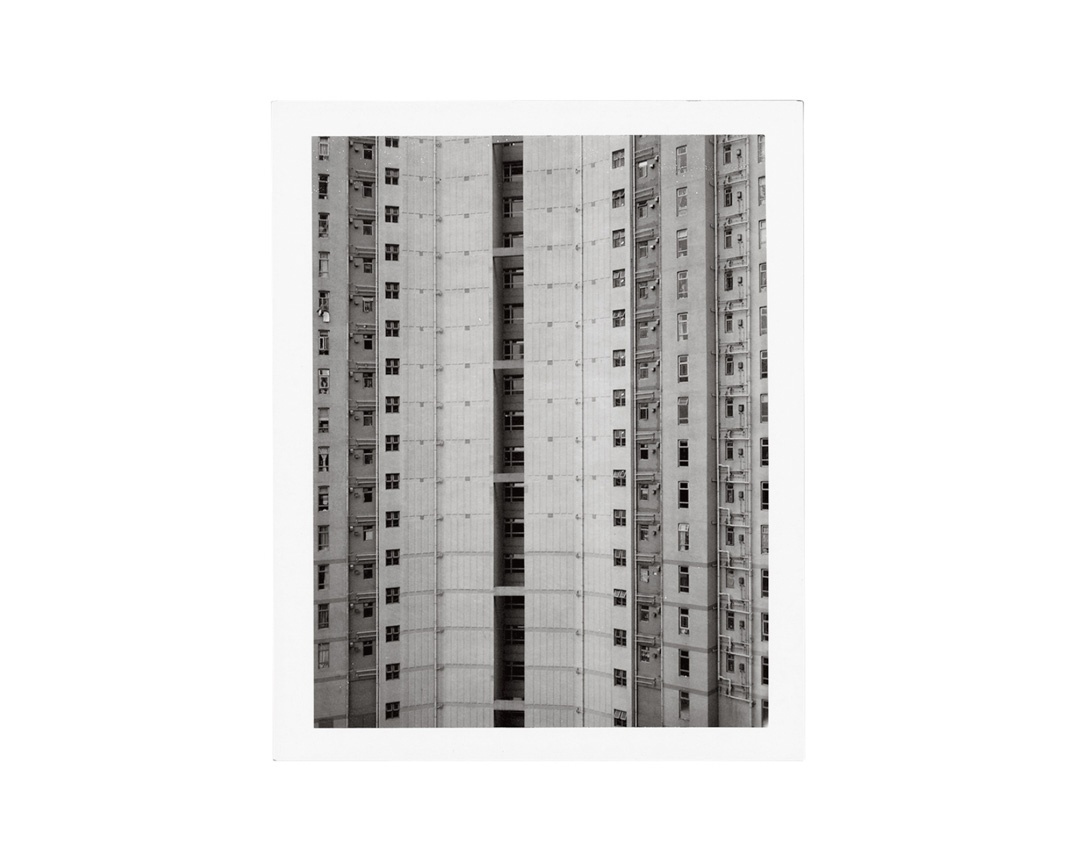
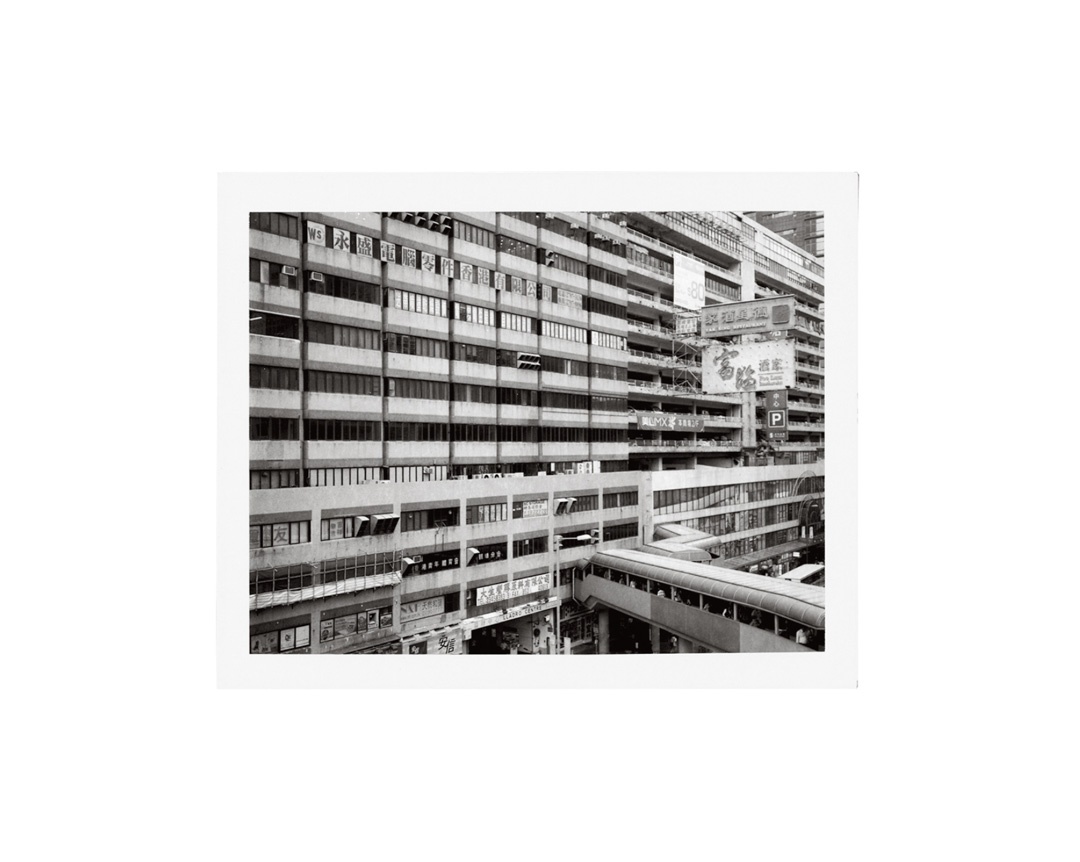

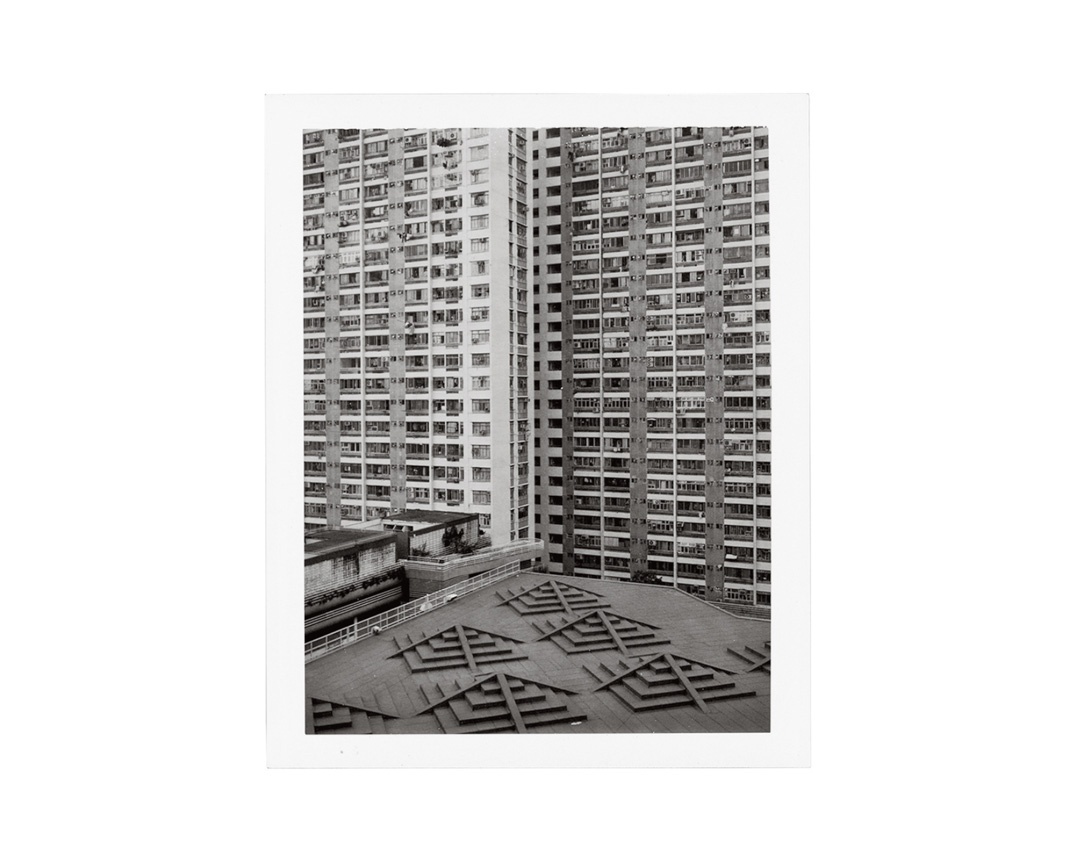

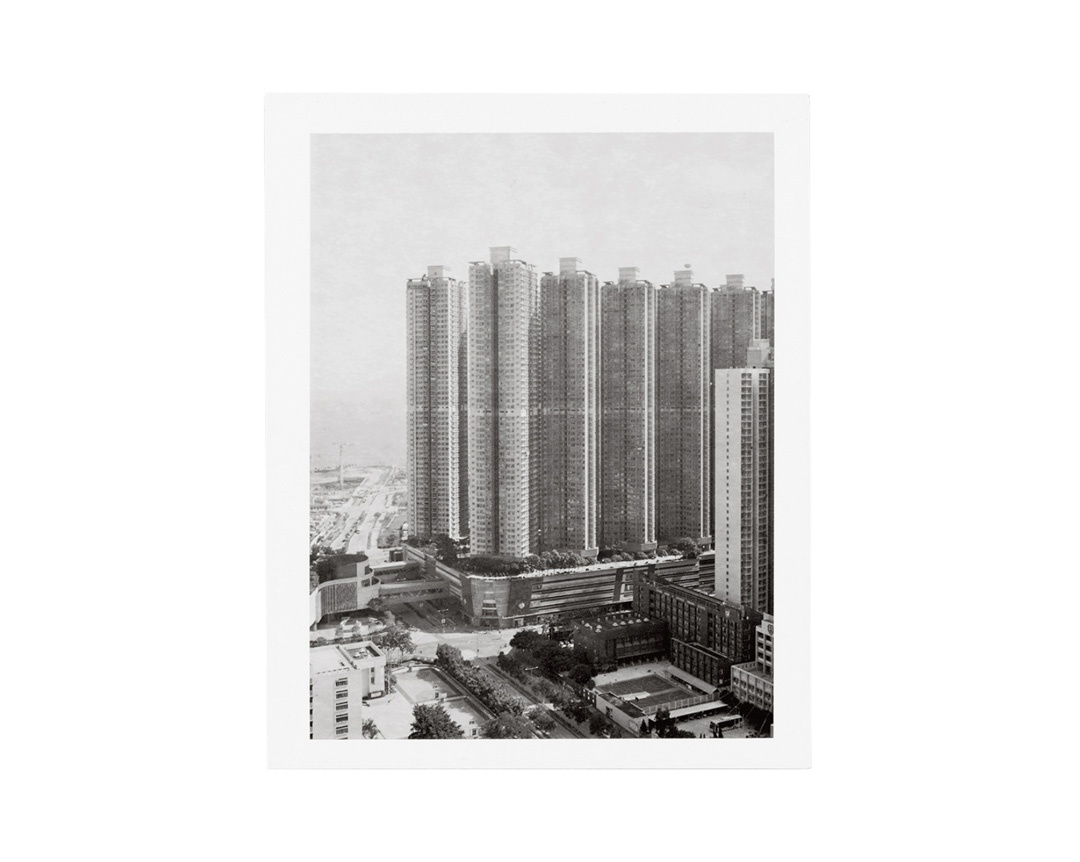
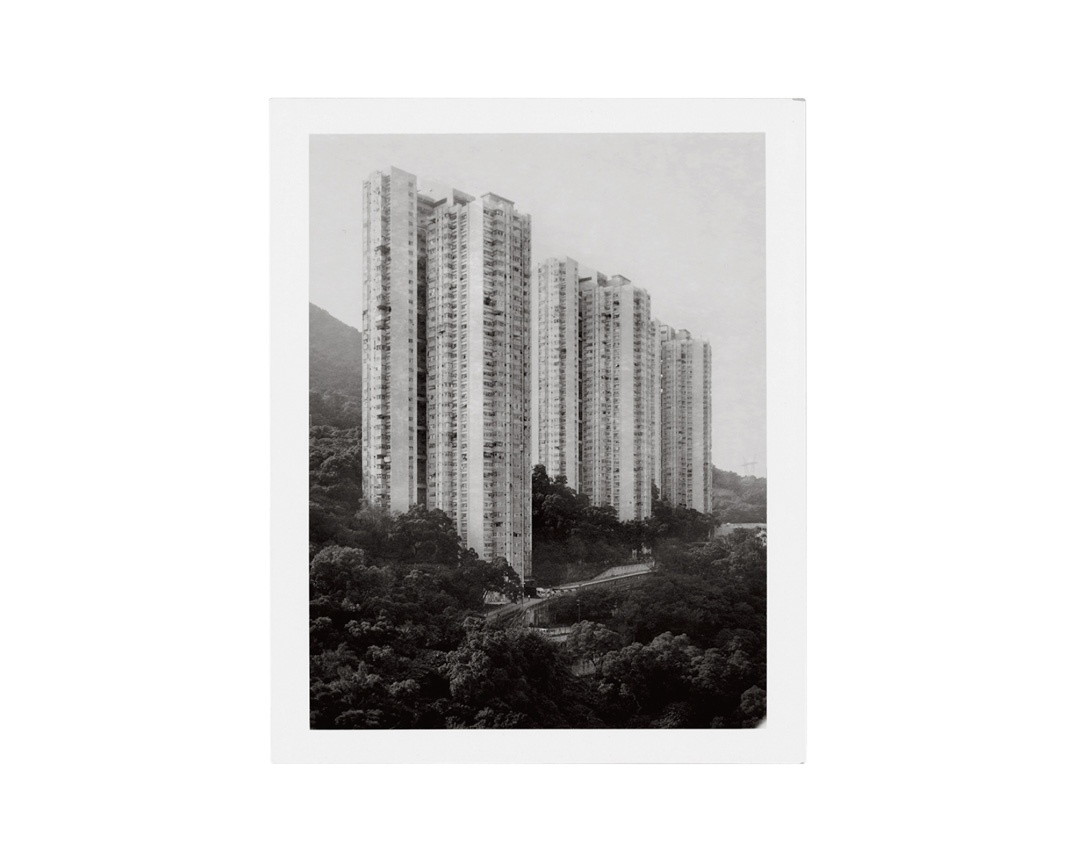
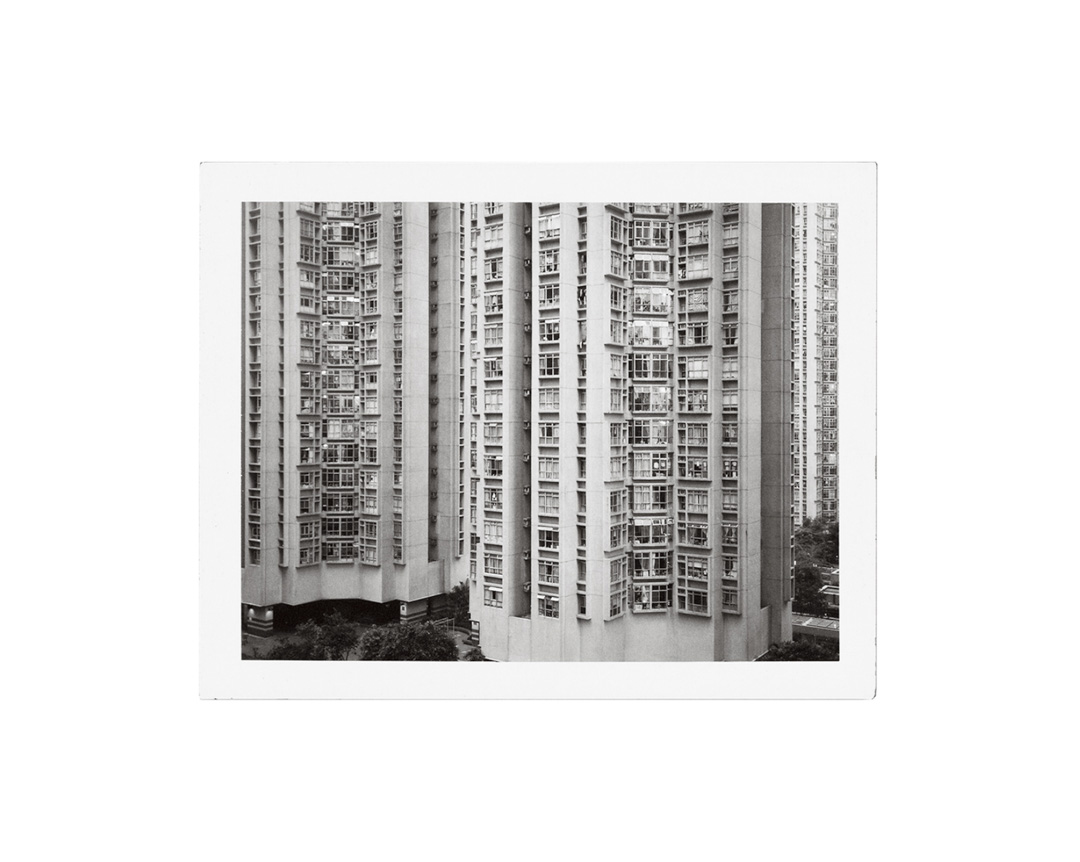

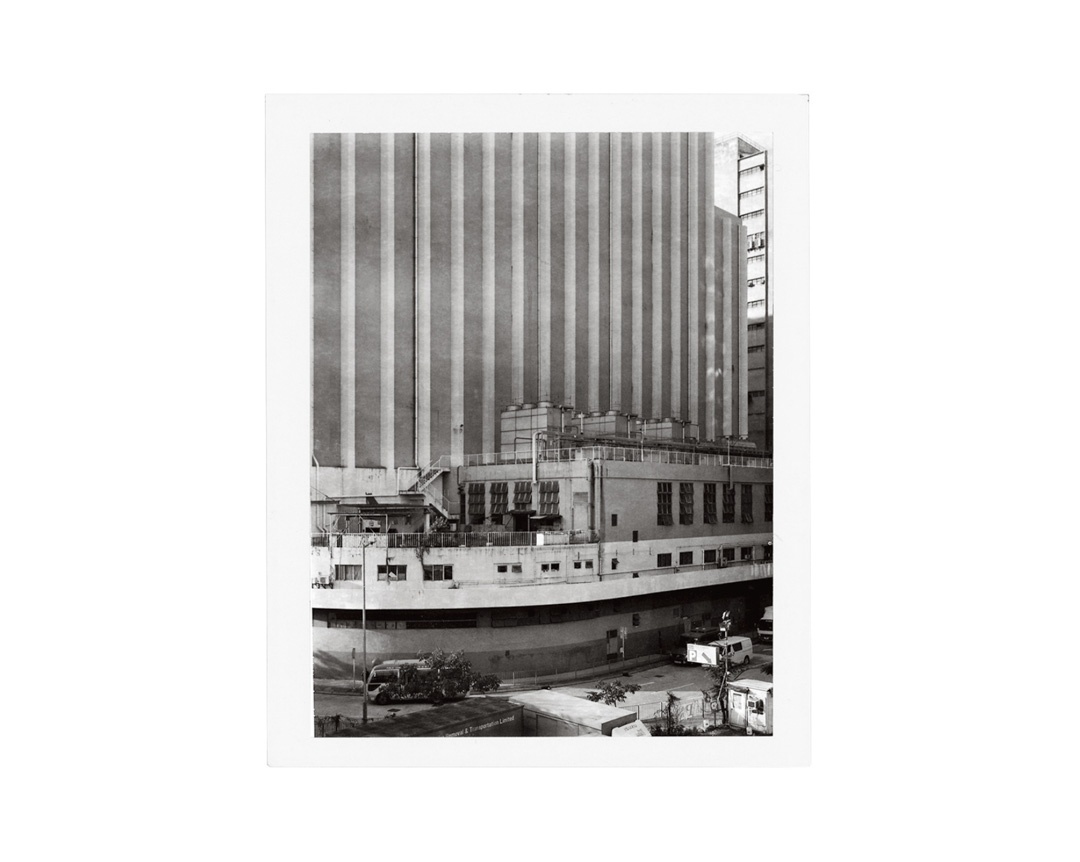
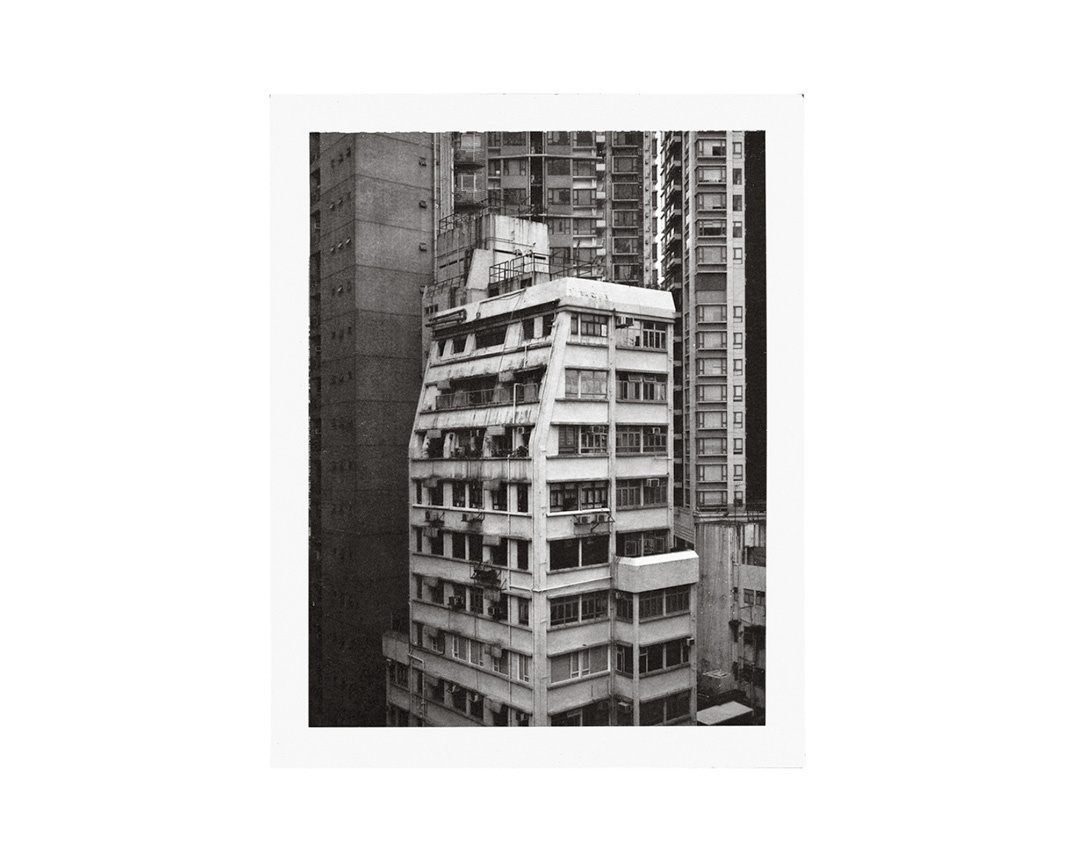




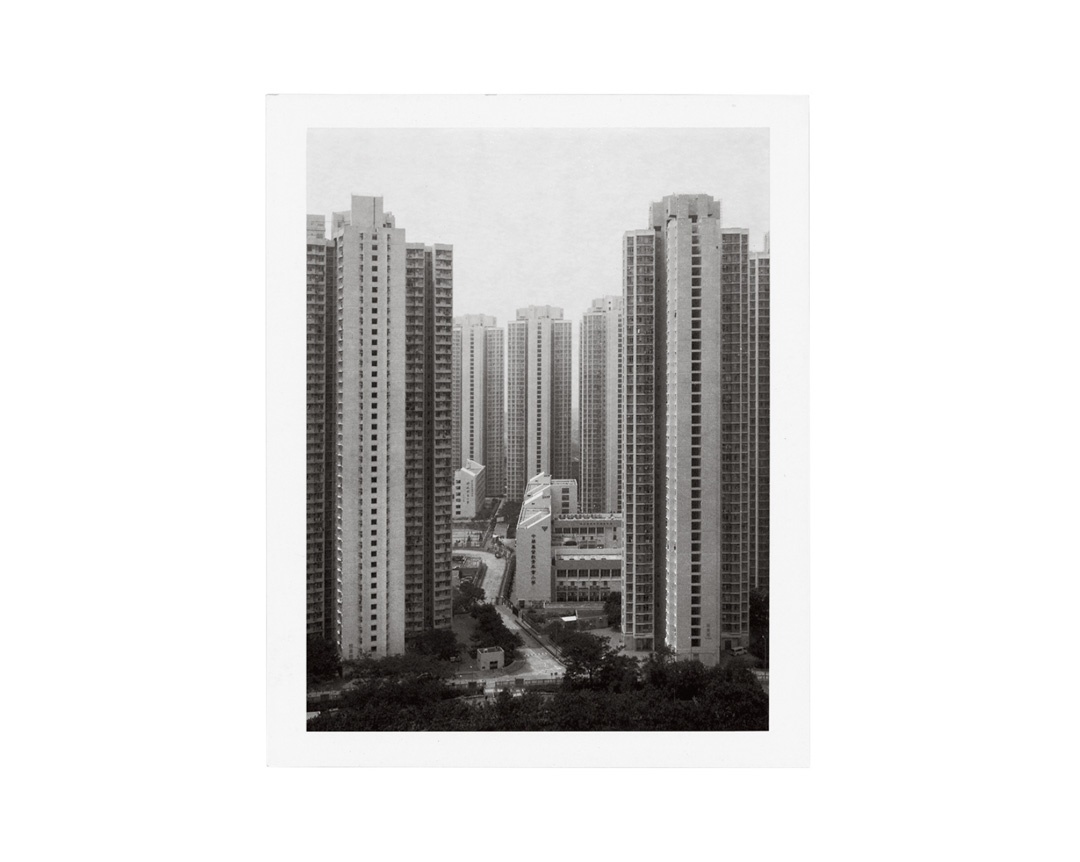

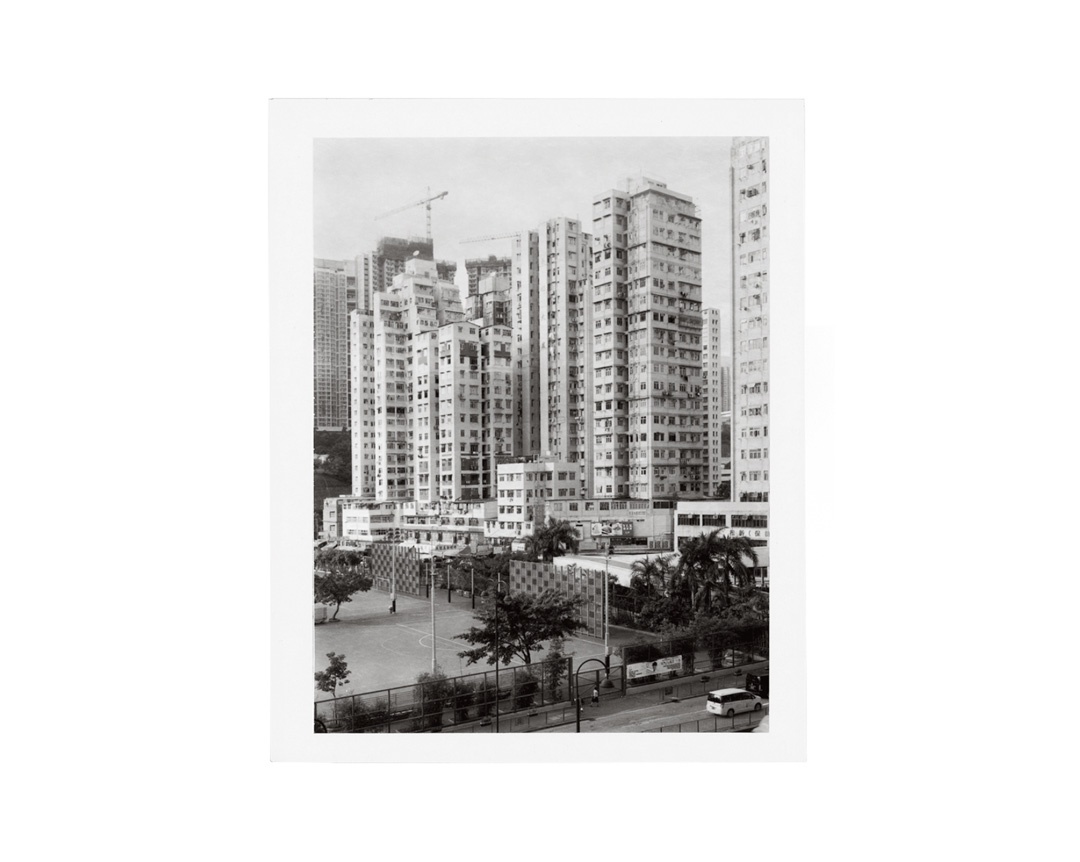
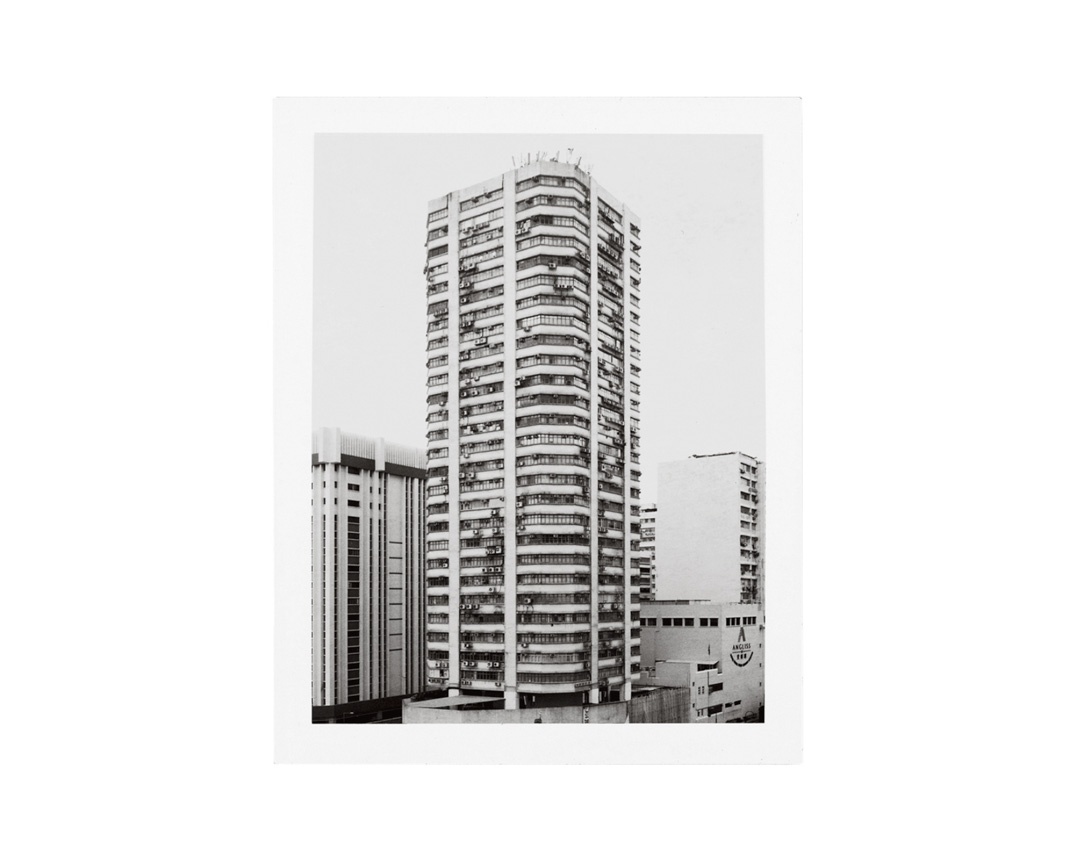
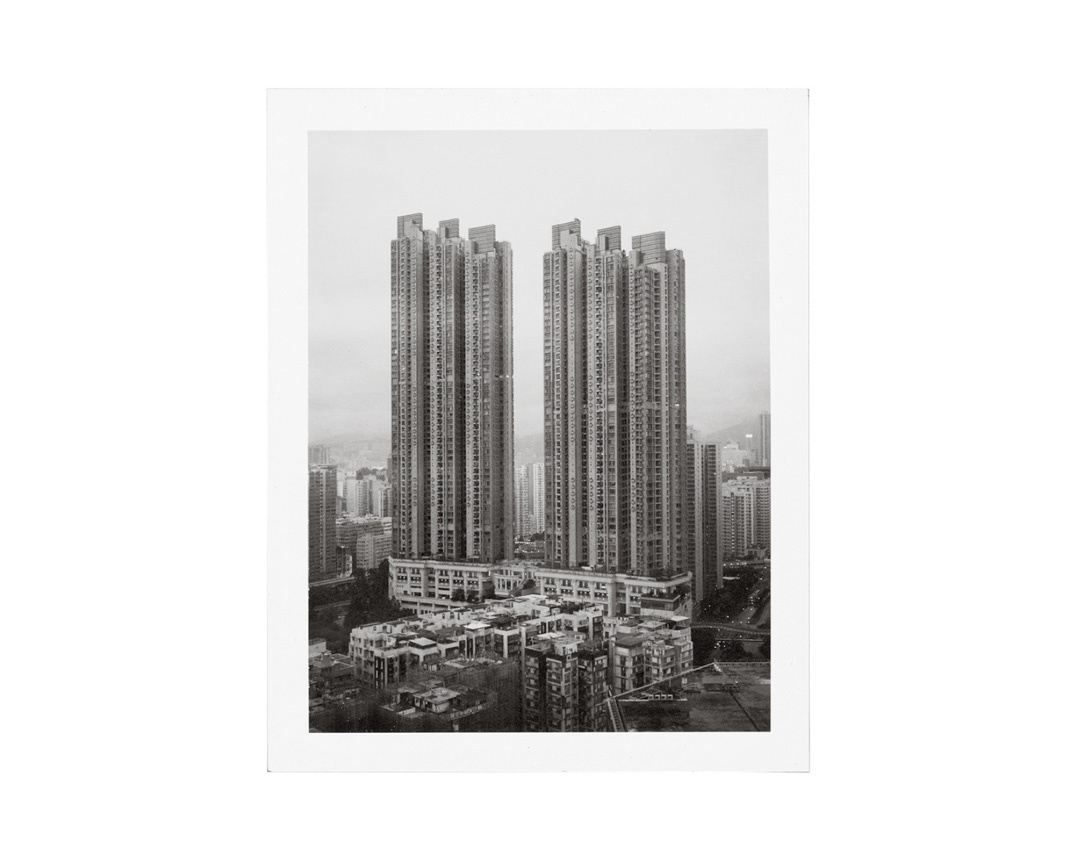


Angelo Zinna
Hong Kong
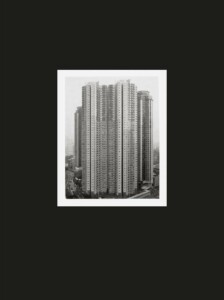
Softcover, 224 pages, 17,5 x 23 cm
€39
Seen from afar, all of Hong Kong’s residential buildings look deceivingly similar, clusters of metal and concrete blocks recognisable only by their colour palettes. Inspected singularly, however, a wide array of typologies appears: the slab, the H-Block, the cruciform, the trident and so on. The cityscape of the Eastern megalopolis has evolved rapidly in the attempt to maximise efficiency of land use, racing side by side to the ever increasing population.
If compared to Andreas Gursky’s large-scale images of Hong Kong’s housing estates, Pascal Greco‘s (b. 1978, Switzerland) Polaroids seem to have been shot in a completely different city. The most distinctive thing about Greco’s series is the small size of his images: 8.5 x 10.6 cm prints all shot with a small format camera now out of production. The collection includes 135 photographs of individual structures built between 1950 and 2000 on Hong Kong Island, the Kowloon Peninsula and the New Territories, providing insight in how architecture has changed over time in order to adapt to the constant growth in human density. To capture the transformations of Hong Kong, Greco had to work within his self-imposed limitations: to “squeeze” the buildings in such tiny frames he had to make several changes in his position, shooting from street level, from rooftops and from the staircases contained in these imposing apartment nests.
The photographs contained inside Hong Kong are much more than illustrative. They point to territorial restrictions and to the issues relating to overpopulation, juxtaposing the high rising apartment blocks to the minute frames to which they necessarily have to be bound. The absence of colors is also a symbol of contrast: while the city is known for its glittering neon lights and lush natural surroundings, below its superficial beauty we find the hidden divergence between the wealthy that inhabit shiny skyscrapers and the poor who are forced to live on rooftops and sub-divided units.